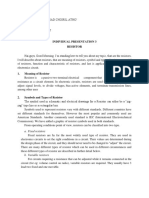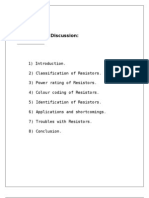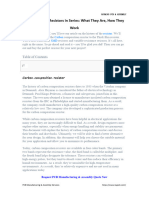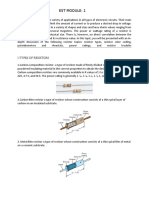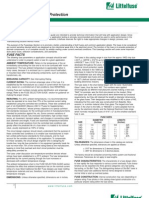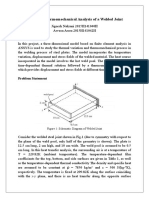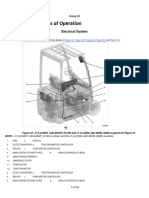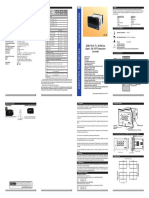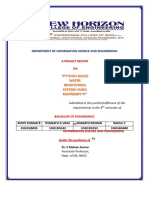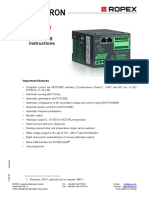0% found this document useful (0 votes)
125 views17 pagesEE-199 L Basic Electrical and Electronics Engineering Lab
This document discusses an experiment to familiarize students with the difference between nominal and measured values of resistors and capacitors. It describes various types of resistors including wire wound, carbon film, metal oxide film, thick and thin film, surface mount, network, variable, and special resistors like light-dependent resistors and thermistors. It also discusses the power rating of resistors and how higher power ratings allow resistors to operate at higher temperatures without burning out.
Uploaded by
Etsham AmjadCopyright
© © All Rights Reserved
We take content rights seriously. If you suspect this is your content, claim it here.
Available Formats
Download as PDF, TXT or read online on Scribd
0% found this document useful (0 votes)
125 views17 pagesEE-199 L Basic Electrical and Electronics Engineering Lab
This document discusses an experiment to familiarize students with the difference between nominal and measured values of resistors and capacitors. It describes various types of resistors including wire wound, carbon film, metal oxide film, thick and thin film, surface mount, network, variable, and special resistors like light-dependent resistors and thermistors. It also discusses the power rating of resistors and how higher power ratings allow resistors to operate at higher temperatures without burning out.
Uploaded by
Etsham AmjadCopyright
© © All Rights Reserved
We take content rights seriously. If you suspect this is your content, claim it here.
Available Formats
Download as PDF, TXT or read online on Scribd
/ 17



